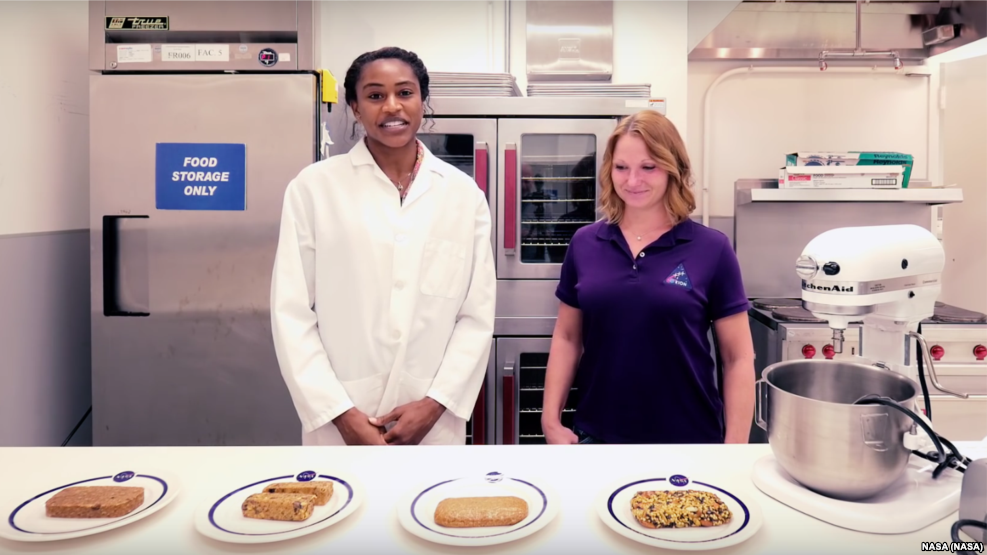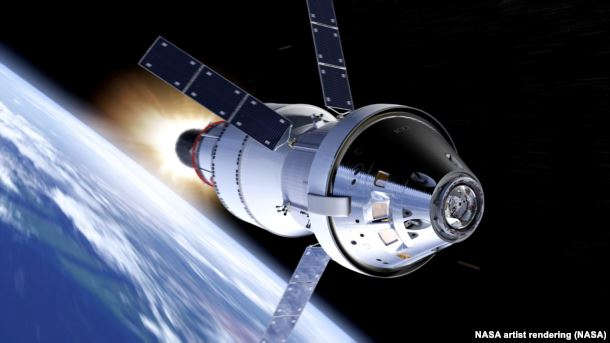
NASA Developing Food Bars for Mars Flights by VOA
When astronauts go to the planet Mars years from now, they will need the right food to stay strong and healthy.
At NASA, the American space agency, scientists are working to create food products that provide nutrition without weighing down the spacecraft.
For the first step to Mars, NASA plans to send astronauts past the moon on what are called deep space missions. They will travel in the Orion spacecraft, which has limited space for food and other supplies.
This is different from the International Space Station (ISS). Its crew members can choose from about 200 food products.
Another difference is that Orion’s flights into deep space will not involve other vehicles carrying supplies, or taking away trash. The Orion crew will have to take everything they need with them, and then bring everything back home.
Limit to what can fly on Orion
Going past the moon means NASA must limit the mass on Orion. That is because a heavier spacecraft needs more fuel and energy to get to where it needs to go.
But astronauts need to eat, so for now, NASA is developing breakfast food bars. Food adds weight to the spacecraft, explains NASA engineer Jessica Vos.
“When you have 700 to 900 calories of something, it’s going to have some mass regardless of what shape it’s in,” she said. “So we’ve taken a look at how to get some mass savings by reducing how we’re packaging and stowing what the crew would eat for breakfast for early Orion flights with crew.”
“When you think about multi-week missions in Orion, having just one package for breakfast items for crew will help us limit the space we need to store them.”

Sometimes Americans eat a protein bar instead of a meal. NASA says the bars available now are not good enough.
“There’s no commercially-available bar right now that meets our needs. So we’ve had to go design something that will work for the crew, while trying to achieve a multi-year shelf life,” said Takiyah Sirmons, a food scientist. She works with the Advanced Food Technology team at NASA’s Johnson Space Center in Houston, Texas.
Her team is working on developing different flavors, like orange cranberry and barbecue nut.
Different choices for other meals
For other meals, Orion’s crew will be able to choose from meals similar to what the ISS crew members eat. On the ISS, astronauts have a choice of foods. Some are “thermostabilized,” which means they are heat processed to destroy harmful microorganisms and enzymes.
Other foods are rehydratable — the water in the food is removed before a space flight. It saves on weight. Then, when the astronaut wants to eat, water is added back into the food.
The Orion crews will have a food warmer to heat up their meals.
Also important for the food scientists is to know how the food bars will affect the mental and emotional health of the astronauts. Food choice and taste are important in making sure the crew eats enough.
This will become more important as the length of the trip increases. That includes the expected 6 to 8 months it will take to travel to the Red Planet.
Spacecraft to Mars in design
NASA officials do not plan to use the Orion spacecraft to get there, but a larger spacecraft in which astronauts can live and work. Six companies are now designing such a vehicle for the space agency.
Astronauts have been testing the food bars at the Johnson Space Center. They are providing comments about their taste, how they feel and how long they would want to eat these foods. This helps the scientists decide the right foods for the long space missions in the future.
But bars will not be enough for trips to Mars. NASA is also working on developing ways to feed the crew on the long missions.
Astronauts on the ISS are growing vegetables in space for the third time. Their experiments will help scientists decide the best way to grow food in space in the future.
The year 2021 is when Orion will launch its first mission with a crew. They will leave the Earth on a Space Launch System rocket now being developed. NASA plans to get people to Mars by the 2030s.
I’m Anne Ball.
And I’m Phil Dierking.
This story was reported by VOANews.com. Anne Ball adapted it for Learning English. George Grow was the editor.
We want to hear from you. Write to us in the Comments Section and visit us on our Facebook page.
______________________________________________________________
Words in This Story
trash – n. items already used, to be thrown away
stow – v. to pack or store carefully and neatly
commercially-available – adj. something that can be bought in a store or market
shelf life – n. the length of time food may be stored and still be good to eat
mission – n. a task or flight that someone is given to do
